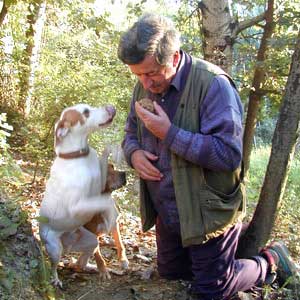
Insiders Guide to Truffles in Italy
November 27, 2013
Explore Italy's truffle hunting traditions with Natale and Giorgio Romagnolo as guides, uncovering the mystique of these prized delicacies from Piedmont to Umbria.
By: Nicole Dickerson / Last updated: November 16, 2023
As the second-largest island in the Mediterranean behind Sicily, Sardinia is a top destination for intrepid travelers. The island beckons beachgoers worldwide with its crystalline blue waters and sun-soaked beaches. Meanwhile, Sardinia’s rugged landscape, dominated by granite and schist, attracts the more adventurous traveler with trekking, climbing, and canyoning excursions. For those seeking enogastronomic experiences, Sardinian food and wine offer a trove of treasures to explore.
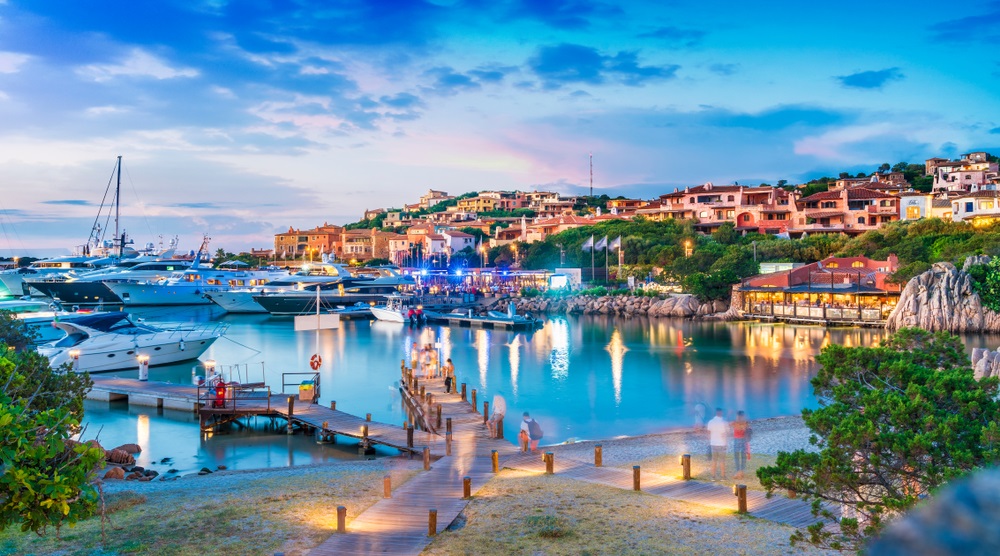
Guide to Italian Gastronomy and Cuisine: Read more
Although part of Italy, Sardinia boasts a unique culture shaped by a diverse historical tapestry. The Nuragic civilization settled on this Mediterranean island between 1500 and 460 B.C. Today, their legacy endures in over 7,000 mystical Nuraghe stone structures scattered across the island.
The island’s cultural landscape was further enriched by subsequent dominations, starting with the Phoenicians, followed by the Romans. The Aragonese took control in 1323, leaving a lasting impact on the island’s identity. Finally, in 1861, Sardinia joined the newly unified Italian state under King Victor Emmanuel II. This rich history has woven a unique blend of influences into Sardinian cuisine and traditions, reflecting an extraordinary intermingling of cultures.
Today, Sardinia is a premier luxury destination in Italy, renowned for its stunning coastlines, unspoiled countryside, captivating history, and exceptional culinary experiences. Its distinct blend of historical influences, natural beauty, and gastronomic excellence makes it an ideal destination for discerning travelers seeking an exclusive, culturally rich getaway.
Sardinia is distinguished as one of the world’s Blue Zones, areas where the population exhibits remarkably high longevity rates. In Sardinia, the incidence of centenarians is tenfold higher per capita compared to the United States. This extraordinary longevity is attributed to genetic factors and the island’s enduring adherence to a traditional lifestyle and diet, somewhat preserved due to its cultural isolation.
The cornerstone of the Sardinian diet is its emphasis on whole grains, dairy, an abundance of vegetables and fruits, and legumes. While meat and seafood are part of the culinary repertoire, meat consumption is typically reserved for Sunday family gatherings or special occasions, underscoring a balanced approach to diet. Bread and cheese are ubiquitous elements of daily meals in Sardinia.
The connection to the land and sea is integral to Sardinian life. Regular practices, including hunting, fishing, and cultivating their produce, are common among Sardinians. Many households continue producing olive oil and wine, sustaining self-reliance and quality in food sources. The local Cannonau wine is particularly notable, a robust red celebrated for having two to three times the amount of heart-healthy flavonoids compared to other red wines, contributing to cardiovascular wellness. This combination of a wholesome diet and a lifestyle deeply intertwined with nature and tradition plays a pivotal role in the remarkable health and longevity of the Sardinian people.
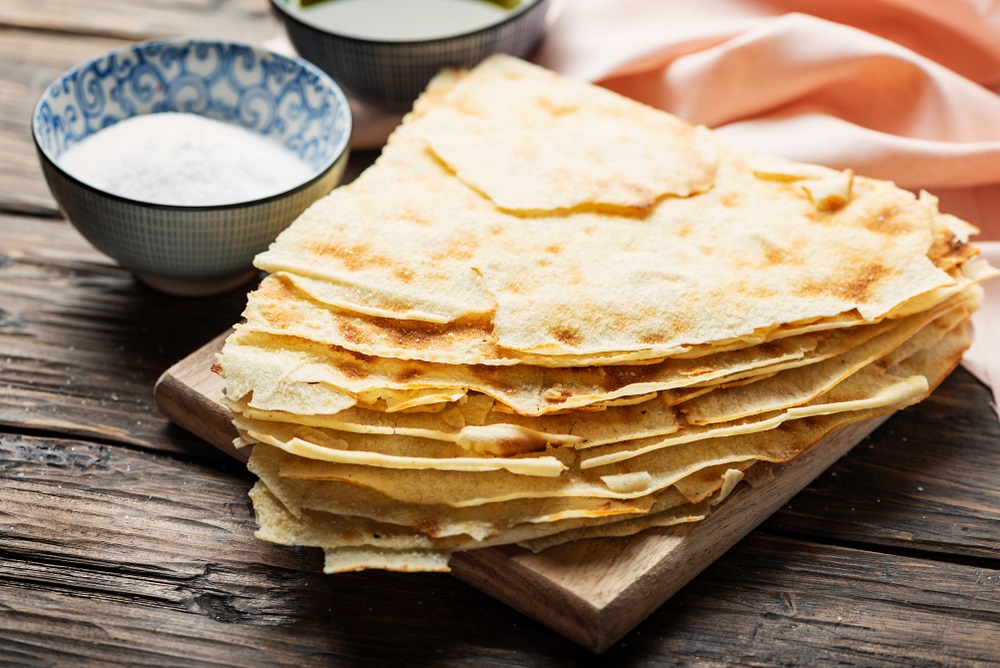
Pane Carasau, a staple in Sardinian cuisine, is renowned for its unique double-toasting method known as ‘carasadura’ (literally ‘hard face’) in the Sardinian language. The journey of creating this delightful bread begins with ‘s’inthurta,’ a traditional process of mixing and kneading the dough. In a large terracotta basin, semolina, flour, water, salt, and fresh yeast are combined to form the base of Pane Carasau.
The next stage, ‘cariadura,’ involves further kneading of the dough on a table, transforming it into a smooth, elastic texture. After this, during ‘pesadura,’ the dough rests in terracotta or cork bowls, cozily enveloped in wool sheets. This period allows the dough to rise gently and develop its flavor.
As the dough settles, the women, guardians of this culinary tradition, prepare the remaining tools needed for the bread-making. The following step, ‘Ordura’ or ‘Sestadura,’ sees the dough divided into smaller pieces by hand. These pieces are then shaped into small balls, dusted with flour, and returned to the terracotta bowls for a brief second resting phase.
The artistry of Sardinian bread-making shines in ‘illadadura,’ where the dough is skillfully rolled out into thin, near-perfect circles. The sheer finesse required for this step is a testament to the bakers’ expertise.
The crucial cooking stage, ‘coghere’, involves placing the dough discs in a blazing wood-fired oven, heated to 450-500°C, similar to pizza making. In the intense heat, the dough cooks rapidly, puffing up as a large air pocket forms, separating the top from the bottom.
Once removed from the oven, the bread undergoes ‘fresadura.’ While still hot, the pane carasau is delicately split into two thin sheets. This step requires both precision and speed to prevent the sheets from sticking back together.
Next is the final toasting, or ‘carasadura,’ where each sheet is returned to the oven for a second bake. This stage crisps the bread and imparts a distinctive texture. The bakers meticulously rotate each circle to ensure even cooking.
Witnessing the making of Pane Carasau is an unforgettable experience. This process is not just about bread-making; it’s a celebration of Sardinian culture, a dance of skill and tradition that results in one of the island’s most iconic foods.
The tradition of coccoi bread in Sardinia is a rich tapestry of culture and history. Originally, this ornate bread was a luxury enjoyed mainly by the wealthiest in Sardinian society. However, for the less affluent, coccoi was reserved for special occasions, marking it as a celebratory staple for festivities and holidays.
Coccoi is distinctively made from durum wheat semolina, resulting in a bread that boasts a hard crust encasing a soft yet dense interior. This unique texture is achieved by adding only a minimal amount of water to the dough, ensuring the inside remains compact and rich.
What sets coccoi apart is its exquisite decorative elements, a testament to the artisanal skill of Sardinian bakers. The bread’s outer edge is first crafted using a ‘serretta,’ a specialized tool that creates the bread’s characteristic serrated edge. The true artistry is displayed in the intricate designs carved into the upper crust. This is done with an ‘arrasojedda,’ a small, precise knife, and tiny scissors for the finer details. These decorations are not just for aesthetic appeal; they are imbued with cultural significance, with different designs often signifying various rituals and celebrations.
Coccoi bread plays a significant role in Sardinian social and cultural events. Each type of coccoi is specially made for specific occasions, such as weddings or Easter, adding a layer of tradition and meaning to these festivities. Creating coccoi is not merely baking—it’s a craft that weaves together the threads of Sardinian heritage, art, and communal life.
Pane Guttiau
Pane guttiau is a popular enhancement of pane carasau. To prepare this Sardinian food favorite, sheets of pane carasau are drizzled with olive oil, sprinkled with salt, and baked in the oven until golden brown.
Pane Civraxiu
Another typical Sardinian bread is pane civraxiu, which was first made in the village of Sanluri in the Campidano Plain. Civraxiu is a large bread with a golden crust and a soft, compact crumb, traditionally baked in a wood-fired oven. Each family has its recipe handed down through the generations.
Moddizzosu
Another popular bread is moddizzosu, made with semolina, a small amount of flour, and potatoes, which give this Sardinian bread its trademark softness. Moddizzosu originated in Campidano and is typically a round, thick bread occasionally enriched with pork fat.
Sa Costedda
In Cagliari in the south of Sardinia, you’ll find sa costedda, a type of focaccia made with fresh tomatoes, garlic, and basil.
Pane Modde
Then there’s pane modde, a Sardinian bread reminiscent of the piadina in Romagna or the crescentina from Modena. It’s made from the same dough as pane carasau and was traditionally cooked in a wood-fired oven as it cooled down after making pane carasau. When cooking pane modde, the bread is slightly moistened with saltwater to give a brilliant, shiny finish. Pane modde is often eaten filled with salsiccia sarda, prosciutto crudo, or cheese. It’s also a key ingredient in la suppa cotta con pane poddine, made with sheep broth, pecorino cheese, and sliced, fresh panedda cheese.
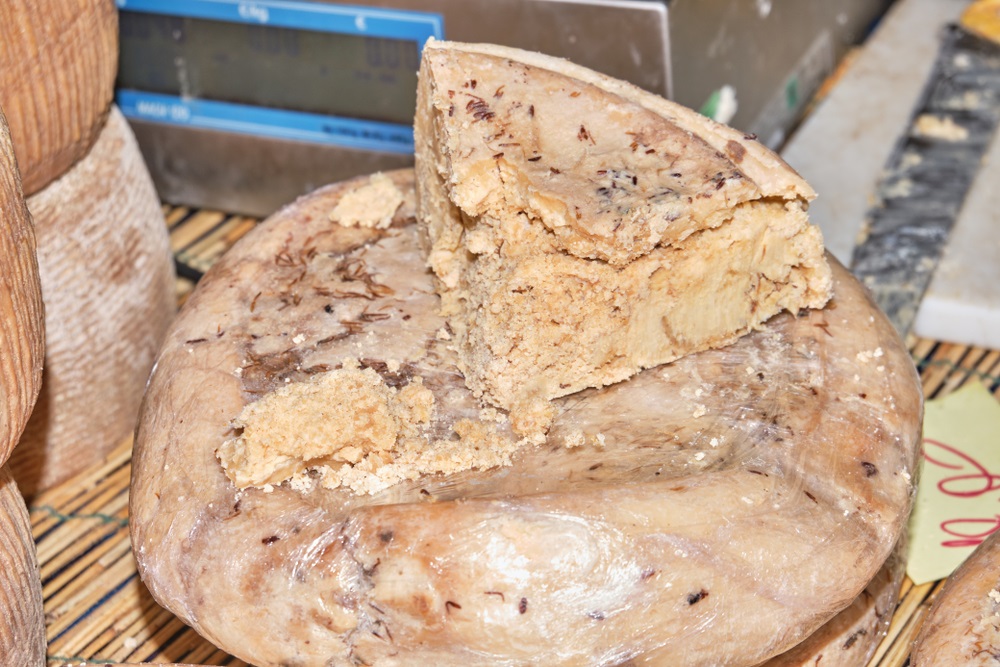
Fiore Sardo, an exquisite cheese indigenous to Sardinia, boasts a rich history dating back to the fourth century A.D. This traditional shepherd’s cheese is crafted exclusively from the raw milk of Sardinian sheep, a testament to the island’s deep-rooted pastoral culture.
The name “Fiore,” meaning “flower” in Italian, pays homage to the distinctive molds historically used in its production. Traditionally carved from chestnut or wild pear wood, these molds featured a stylized flower inlay. This intricate design wasn’t merely decorative; it imprinted a beautiful floral pattern onto the cheese, infusing each wheel with a touch of artistry reflective of the island’s heritage.
In 1966, Fiore Sardo was honored with the Protected Designation of Origin (PDO) status, a prestigious recognition that underscores its unique regional identity and traditional production methods. This designation ensures that only cheese produced according to specific standards and within the designated geographic area can bear Fiore Sardo’s name, safeguarding its quality and heritage.
The enduring appeal of Fiore Sardo lies not only in its rich, distinctive flavor but also in its embodiment of centuries-old Sardinian cheesemaking traditions, marrying artisanal skill with the island’s pastoral legacy.
Casu marzu, also known as casu martzu, is one of Sardinia’s most famous and, indeed, most controversial cheeses. This unique cheese originates from a serendipitous shepherd’s error and is known for its unconventional production process. It is crafted from pecorino cheese that undergoes an unusual transformation when dairy fly larvae infest it.
The cheese is colloquially referred to as “il formaggio che si muove” (the cheese that moves) or “Formaggio con i vermi” (cheese with worms), alluding to the active larvae within it. These larvae play a crucial role in the cheese’s maturation, which takes three to six months. As they feed on the cheese, they break down its fats, resulting in an intensely flavorful, pungent, and lightly spicy product with a soft, creamy texture.
Despite its deep roots in Sardinian culinary history, casu marzu has faced challenges due to modern health regulations. The European Union’s sanitary standards have led to a ban on the production and sale of this cheese, citing health concerns associated with the live larvae.
For those adventurous food enthusiasts eager to experience this slice of Sardinian gastronomic tradition, obtaining casu marzu can be quite a quest. It often involves seeking out local shepherds who continue to produce the cheese following traditional methods, albeit outside the official commercial channels. Sampling casu marzu is about tasting a cheese and engaging with a rich, albeit unconventional, piece of Sardinian cultural heritage.
Another cheese made only in Sardinia, Pecorino Sardo, is a semi-cooked, hard cheese. This cheese is made from the milk of indigenous Sardinian sheep, renowned for their milk production. The sheep feed on wild Mediterranean shrubs, which gives Pecorino Sardo its signature flavor. This cheese has several variations, including Pecorino Sardo Dolce, which offers a mild, sweet, and delicately flavored version of the cheese. In contrast, Pecorino Sardo Maturo is intensely flavored and piquant after aging for two months minimum.
A curd is formed using sheep or goat milk. The curd is left to drain for a few days before being placed in a brine, where the casu axedu becomes acidic, pungent, and salty. It often accompanies bread, vegetables, or salads when fresh. Once aged, casu axedu can be grated over pasta too.
Also known as “su casu cun s’axridda,” axridda is mainly produced in Cagliari. The cheese is made from either sheep’s milk or a mix of sheep and goat’s milk using rennet from either lamb, goat kid, or calf. Axridda has a unique production process in which it is covered with clay after being rubbed with mastic oil after sixty days of maturation. The clay insulates the cheese and eliminates the need to wash the rind or rotate the cheese on shelves. This process results in a buttery texture and complex flavors.
Generally produced by farmers, casuzolu is a stretched-curd cow’s milk cheese. It comes from Montiferru, an area close to Oristano. The lengthy cheesemaking process involves breaking the curd and leaving it to rest until a specific point in lactic fermentation, which may take hours. Once there, pieces of curd are stretched while being heated in hot water, and then the process is repeated in cold water. Casizolu, also called peretta, eventually forms a round pear shape. After aging for a few months, it’s time to enjoy casizolu’s buttermilk and grassy flavors.
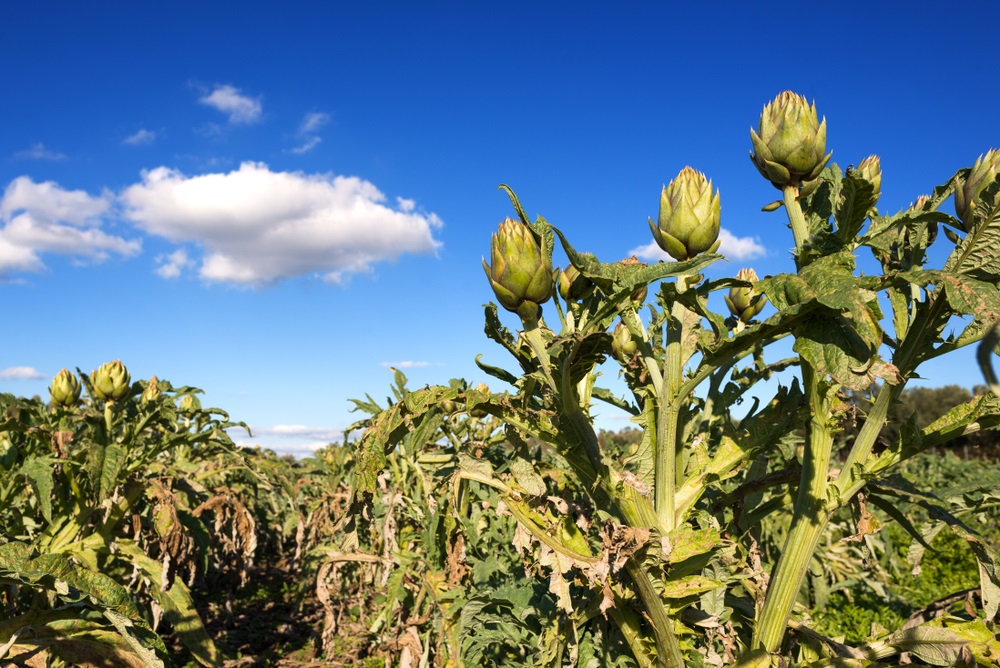
Carciofo Spinoso di Sardegna
In addition to the typical prosciutto, lardo, and salami often served for aperitivo, Sardinians also enjoy salsiccia sarda. It’s typically made with minced pork meat, salt, pepper, minced garlic, and seasonings like fennel and anise. More rustic versions might include wild boar, goat, or lamb, and one family’s recipe might be different from the next, but in general:
Spiky Sardinian artichokes find their preferred soil in coastal areas or along riverbanks on the island. Distinguished by their unique shape, spikes, and bright purple color, carciofo Spinoso di Sardegna are very tender with a fleshy core. They’re so tender and delicate that they can be eaten raw, dipped in a mixture of olive oil and salt. Carciofo spinoso di Sardegna are delicious when preserved sott’olio (under oil). For an authentic taste of Sardinian food, try carciofo spinoso prepared with bottarga and paired with a glass of Vernaccia d’Oristano.
Bottarga di Muggine is a flavorful delicacy of the island that can not be missed, made from the roe pouches of the flathead grey mullet. The roe pouches are cleaned, cured in salt, pressed, and then dried to form bottarga, and the finished product is loaded with salty, savory flavor. This Sardinian specialty is usually grated, sliced, or chopped and used to flavor various dishes. Bottarga can also be served for aperitivo sliced thinly and dressed with lemon juice and olive oil.
Bottarga di tonno is also made from the roe of tuna fish. Once thought of as a poor man’s meal, today it’s more of a luxurious treat enjoyed throughout Sardinia.
Considered the red gold of Sardinia, saffron is one of the island’s most precious spices. It’s cultivated in the province of Medio Campidano in the villages of Turri, Villanovafranca, and San Gavino Monreale. Notably, Zafferano di Sardegna is exceptionally fragrant with more intense color and flavor than other saffron.
Another product unique to Sardinia, corbezzolo honey, is adored for its bitter flavors. The honey is born from the corbezzelo tree’s flowers, a western Mediterranean shrub fruit. Typically produced in autumn and more so in years with plentiful summer rains and a mild August, these are the optimal flowering conditions for the plant. Corbezzelo honey pairs exceptionally well with fatty cheeses and is also served with saedas, a traditional Sardinian dessert.
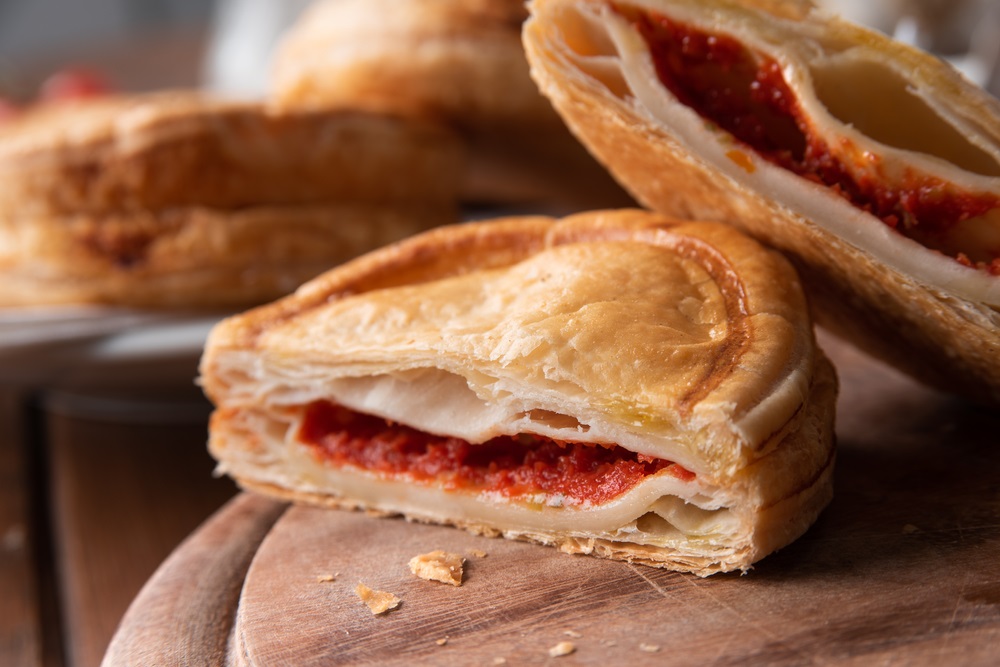
Pizzetta Sfoglia Cagliaritana
For antipasti, Sardinians will commonly serve an assortment of cheeses and charcuterie mentioned above with pane carasau or another traditional Sardinian bread. Olives and different vegetables preserved sott’olio are also typically enjoyed. Here are a few other must-try Sardinian antipasti.
Octopus salad is a fresh dish that brings the taste of the Mediterranean Sea to the table. The octopus is first cleaned and then beaten to tenderize the meat. Next, the octopus is boiled and cut into chunks. Finally, Insalata di polpo is seasoned with olive oil, lemon juice, parsley, celery, salt, and pepper. It’s left to rest in the refrigerator for one hour for the flavors to combine before serving.
Zuppa di cozze is an easy-to-prepare antipasto with succulent sea flavors. Garlic and olive oil are heated in a pan. Next, the mussels are added and then covered with a lid. Once the mussels have opened, white wine is added and cooked until the alcohol evaporates. Then, the mussels are removed, and the leftover sauce is strained off. Next, garlic, olive oil, tomatoes, and tomato puree are cooked with that leftover sauce. After simmering the sauce, the mussels are added back in, and chopped parsley is used to finish the dish. Zuppa di cozze is served with pane carasau and is incredibly delicious alongside a glass of Vermentino.
For a different take on mussels, try cozze fritte. This preparation sees mussels cooked in a covered pan with olive oil, garlic, and parsley until they open. The mussels are removed from their shells, dredged in semolina, and fried in hot oil. Basil and fennel are fried until crunchy and served on the cozze fritte.
Sardinia has a long history of cooking snails, known as lumache on the island. Lumache is especially popular in the northern province of Sassari and is prepared in various ways. They are commonly sautéed with oil, garlic, parsley, and breadcrumbs or served in a slightly spicy tomato sauce.
A purely Sardinian antipasto, carciofi e bottarga is exceptionally delicious and easy to prepare. The Sardinian artichokes are cleaned, cut into quarters, finely sliced, and then placed in a bowl of water and lemon juice to prevent any browning. To serve, the artichokes are drained from the liquid, laid on a plate, and dressed with sliced bottarga, olive oil, and lemon juice.
Pizzetta sfoglia are a common antipasto throughout Sardinia which originated in Cagliari. Consequently, they’re also known as Cagliaritana. This antipasto is made from puff pastry rounds filled with a tasty tomato sauce, anchovies, and capers.
Involtini di cavolo, or stuffed cabbage rolls, are a traditional Sardinian food that can be served as antipasti, contorni, or secondi. Cabbage leaves are boiled, then wrapped around a soffrito of garlic, onions, celery, and minced meat. Then, the involtini are browned in a pan with splashes of broth and tomato sauce as needed; to serve, the involtini di cavolo are topped with grated pecorino and their sauce.
Panadine is a tasty Sardinian food reminiscent of a hand pie. Their dough is made from a mixture of semolina, lard, and water, which is worked until smooth. Next, the dough is cut into circles, and a variety of fillings can be sandwiched between the dough, including peas and pancetta, vegetables, or meat and potatoes. The classic closure for panadine involves pinching and twisting the edges of the dough together. Finally, the panadine is baked until golden brown and crispy. They can be served as antipasti, though panadine is hearty enough for a complete meal.
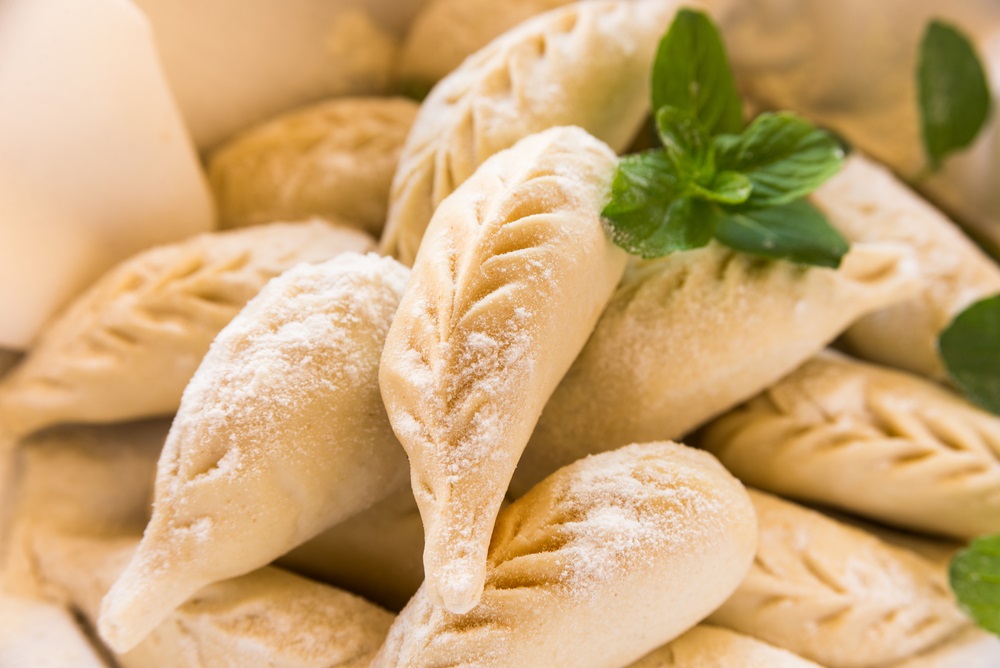
Also known as gnocchetti Sardi, malloreddus is a type of handmade pasta with a gnocchi-like shape. In other parts of Sardinia, the pasta is called zizoneddos. However, zizoneddos are somewhat smaller and not as elongated.
Malloreddus all campidanese is a pasta preparation typical of the Campidano Plain made with saffron, fresh sausage with fennel seeds, tomatoes, and pecorino cheese. Alternatively, you’ll find zizoneddos cooked in more northern areas of the island with wild fennel, tomato sauce or ragù, and pecorino cheese.
Typical of Ogliastra, culurgiones are a Sardinian version of ravioli or dumplings, with subtle regional variations. The traditional version from Ogliastra is filled with potatoes, pecorino cheese, onions, garlic, and mint. Other fillings may include chard, spinach, or saffron. Culurgiones are typically served in tomato sauce and topped with grated pecorino cheese.
Fregola Sarda is an authentic pasta made exclusively in Sardinia. It’s a handmade pasta whose name means little crumb, made of little hand-rolled balls of durum wheat semolina toasted in the oven when fresh. Fregola Sarda is cooked either in boiling water or broth or sauce. You’ll find a variety of fregola preparations throughout the island. Fregola con arselle (clams) or fregola ai frutti di mare are two delicious seafood preparations whose brothy sauces bring flavors of the sea. Saffron can be included here as well for a more flavor-packed dish. Fregola Sarda can also be prepared in a style similar to Risotto.
Su filindeu is one of Italy’s rarest pasta. It’s so rare that only the women of a single Sardinian family in the province of Nuoro have known how to make it for the past 300 years. The skilled hands of pasta maker Paola Abraini make su filindeu by mixing semolina flour, water, and salt to create a dough that is pulled and folded repeatedly by the fingertips into 256 perfectly even thin strands of pasta. The fragile pasta wires are then stretched diagonally across a circular frame in an intricate, layered pattern.
Traditionally, for the past 200 years, su filindeu was only served to pilgrims who trekked by foot or horseback from Nuoro to the village of Lula for the Feast of San Francesco. Moreover, the pasta is at risk of extinction without passionate pasta makers willing to take on the time-consuming and challenging production process.
One of Sardinia’s most straightforward and flavorful pasta is spaghetti con la bottarga. While the spaghetti is cooking, a simple sauce of finely minced shallots, crushed garlic, and olive oil is prepared. The cooked pasta is added to the sauce in the pan and then sprinkled with grated bottarga. Additional variations may include chopped parsley, lemon zest, or toasted breadcrumbs.
Another popular seafood pasta in Sardinia is spaghetti ai ricci. Sea urchins are common in Sardinia and are often consumed raw with just a splash of lemon. After cooking the spaghetti, add the pasta to a pan with garlic, olive oil, parsley, and chilies. Finally, the sea urchins are added at the last minute before serving.
Cascà all carlofortina is a Sardinian couscous recipe that is difficult to find outside of the Sulcis region. The dish is honored at the Cuscus Tabarchino festival held every April in Carloforte. The couscous typically incorporates chickpeas and wild fennel. However, variations add different vegetables, herbs, and meat depending on the season.
Also called suppa cuata, la zuppa Gallurese isn’t a soup, as the name suggests. It’s more like a casserole; stale bread or pane carasau is soaked in sheep broth and then layered with pecorino cheese, mint, and parsley to assemble the dish. Zuppa Gallurese is then topped with cheese and baked until golden brown.
Dating back to the 16th century, lorighittas are handmade pasta typical of the Morgongiori village in the province of Oristano. The braided, ring-shaped pasta is left in a basket to dry before being cooked in any number of sauces.
Additionally, macarrones de busa is handmade pasta made from semolina and water. The pasta is formed by wrapping the dough around a knitting needle and can be dried or cooked fresh.
The following are several must-try Sardinian foods that are hearty enough to be served as a whole meal but could also be served as a separate course.
Pani frattau is a dish originally invented to use old pane carasau. To make the dish, layers of pane carasau are soaked in a hot sheep broth and then topped with tomato sauce, pecorino cheese, and poached egg.
Melanzane alla Sassarese is an eggplant recipe not to be missed. First, eggplants are cut in half lengthwise, and the flesh is scored with a grid pattern. Then, parsley, garlic, and chile peppers are finely minced and placed on top of the scored flesh. The eggplant is drizzled with oil and seasoned with salt before being grilled skin-side down. They’re cooked over the grill until the flesh becomes melt-in-your-mouth tender and is easily scraped out of the skin. Melanzane alla Sassarese is the ideal side dish for meat or seafood cooked on the grill.
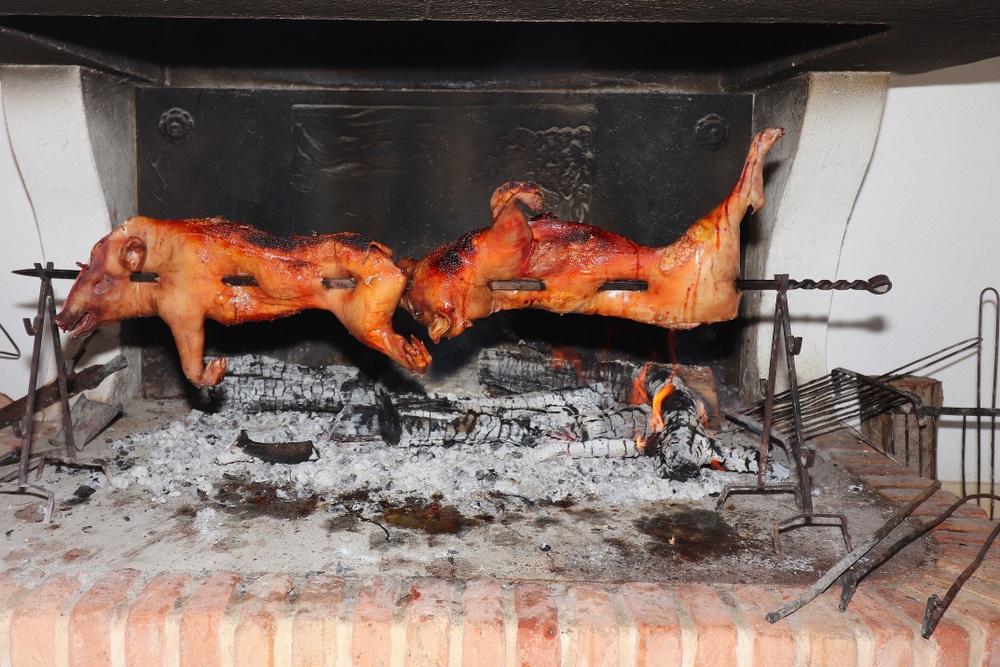
Su porceddu is a quintessential Sardinian food that can’t be missed. It’s a roasted suckling pig, which must be approximately forty days old to ensure the meat is tender. The most traditional way to prepare su porceddu involves roasting the pig wrapped in mirto or myrtle leaves over a fire pit. Su porceddu is often prepared for holidays or special occasions and is best enjoyed with a glass of Cannonau.
This is an ancient dish historically prepared by peasants and shepherds. Sa piscadura is typically made with pig parts that weren’t consumed immediately after slaughtering, such as the head, ears, and legs. It’s reminiscent of a hearty stew made with pork, sausage, chickpeas, fava beans, cabbage, and potatoes. Each is fished out with a slotted spoon; hence the name piscadura and pane carasau is dipped in the broth to serve.
A traditional lamb preparation in Sardinia, Agnello con carciofi, originated in the poor, pastoral traditions of the island. The dish involves slowly cooking lamb with garlic, Sardinian artichokes, potatoes, and fresh parsley. The combination of lamb and the carciofo spinoso gives a genuinely authentic Sardinian food experience.
Pecora in cappotto, or sheep in coat, is another traditional Sardinian recipe representative of the island’s agropastoral culture. The mutton is boiled along with carrots, onion, celery, potatoes, thyme, salt, and chilies. Skimming the water or scamai s’abba is necessary to remove the foam released while boiling the meat. Pecora in cappotto is often served with broth and pane carasau.
Sanguinaccio di maiale, known as Sardo as sanguineddu, is a pork blood sausage originating in the ancient agropastoral traditions of raising domestic pigs in Sardinia. It’s made by mixing pork blood with raisins, sugar, cinnamon, aniseed, and cloves. The mixture is left to sit overnight. Then, the pig intestines are filled with the blood mixture, tied, and boiled the following day. The sanguinaccio di maiale is sliced to serve.
Different versions of sa trattalia are found throughout Sardinia, though traditionally, the dish comes from Ogliastra. It’s a means of using all the leftover parts of the sheep after slaughter. The heart, lung, liver, spleen, small intestine, and peritoneum are tied on a spit using the intestines, wrapped in a layer of fat, and roasted. In contrast, sa cordula is covered with part of the stomach. In either case, it’s served on bread to absorb all the fat and flavor of roasted offal.
In Sassari, you’ll find a dish made with beef entrails called zimino. The diaphragm, small intestine, rectum, liver, and sometimes the kidneys and spleen are grilled. Once cooked, they’re cut with scissors and eaten by hand, seasoned only with salt and pepper.
Burrida is a Sardinian technique used with skate, dogfish, or any other firm fish. It involves simmering sliced fish in a broth flavored with celery, onion, carrot, and lemon. Cagliari’s take on burrida, called burrida a sa casteddaia, then sees the fish dressed in garlic, walnuts or pine nuts, parsley, and vinegar sauce. The fish is always served cold after it has had a few hours to absorb the sauce. Oristano’s version of burrida uses tomato sauce rather than nuts and vinegar.
Spigola alla Vernaccia is a delicious seabass dish made with oxidized, savory Vernaccia di Oristano wine. The seabass is stuffed with garlic, parsley, and sundried tomatoes and then dredged in flour. Next, the fish and black olives are set in a baking dish. Vernaccia is added throughout cooking, so the fish is never dry. The result is the perfect combination of Mediterranean flavors.
You’re likely to find aragosta alla Catalana in the northwestern city of Alghero. The dish comprises boiled lobster and meat cut into small pieces. Then it’s mixed with tomatoes, onions, olive oil, and lemon juice. Sometimes potatoes and capers are added, too.
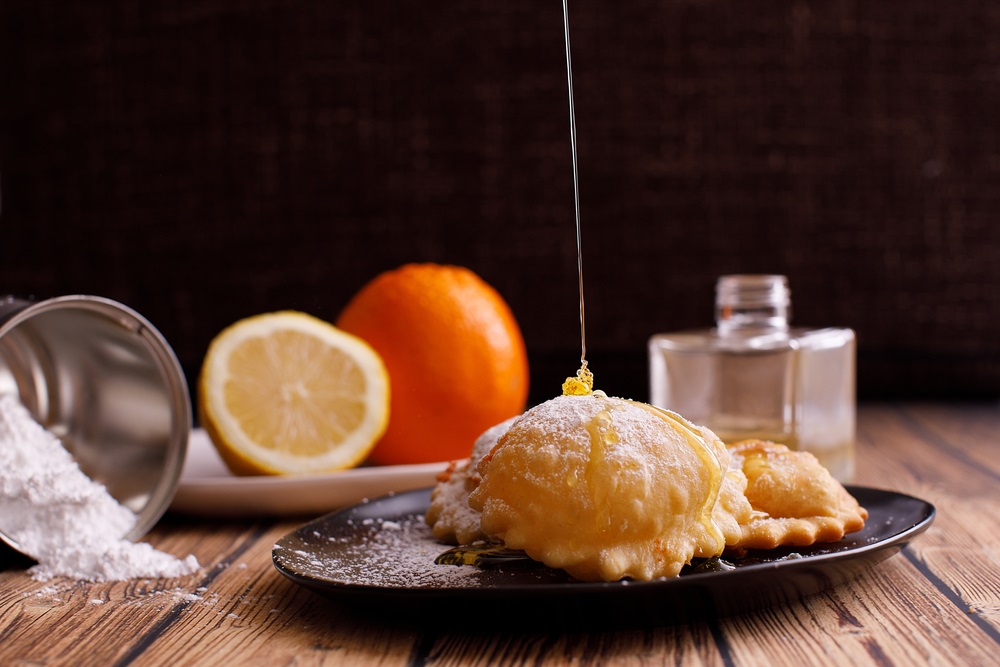
Seadas are irresistibly delicious and the trademark dessert of all Sardinian food. A light pastry crust housing pecorino cheese is fried until golden and crispy, then drizzled with honey right before serving. Grated lemon zest is sometimes added to the filling. The real trick to saedas is the pasta violata, or abused pastry made of semolina flour and lard. It requires a lot of elbow grease to get the right consistency.
These shortcrust pastry cookies are made with eggs, flour, sugar, lemon zest, and baking soda. Raisins, chopped walnuts, and almonds are also mixed into the dough. After resting, the dough is rolled out and cut into diamond shapes. Once the pabassini are baked, they’re frosted with icing made from sugar, water, and a touch of lemon juice and then decorated with sprinkles.
Pan’e saba is a Sardinian cake made with a thick grape syrup called saba or sapa. It was traditionally made in the fall or winter after the grape harvest and only for special occasions. The basic version of pan’e saba is made with grape syrup, flour, eggs, milk, raisins, and baking powder. Other ingredients like hazelnuts or dried fruit might be added, too.
These traditional Sardinian cookies are also made with saba. Tiliccas are shaped into a unique horseshoe spiral shape filled with grape must syrup, orange zest, and ground almonds.
Liquore di mirto is the perfect way to end a meal of delicious Sardinian food. It’s made by macerating red myrtle berries in alcohol for several weeks. The liquid is then strained and sweetened, resulting in a liqueur with herbaceous myrtle flavors.
If you would like us to customize an exclusive luxury tour, contact us and let us know your travel plans. We offer luxury food and wine tours for private groups of a minimum two guests. In addition, all of our private, chauffeured tours are available year-round upon request.

